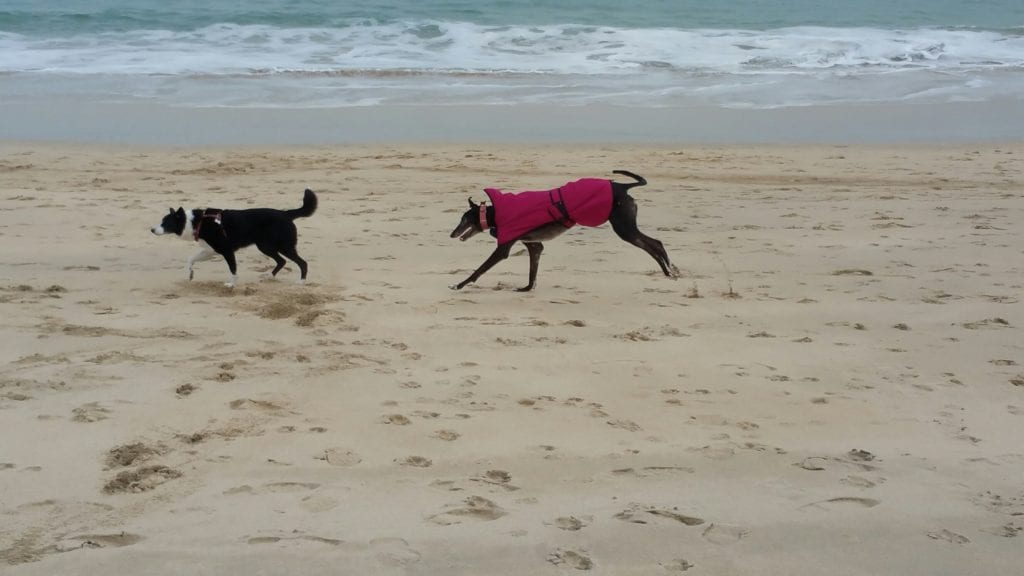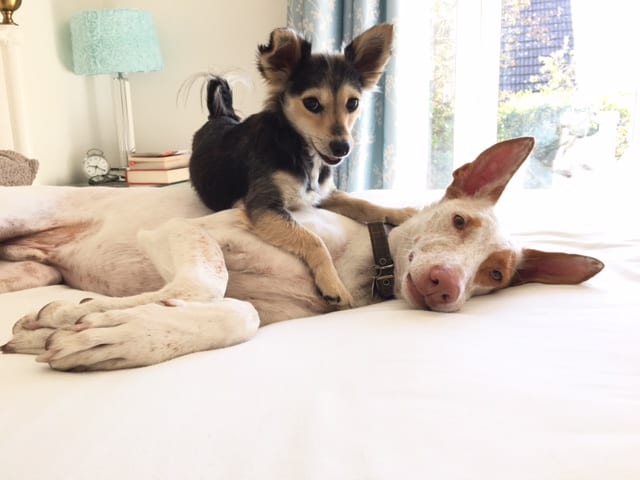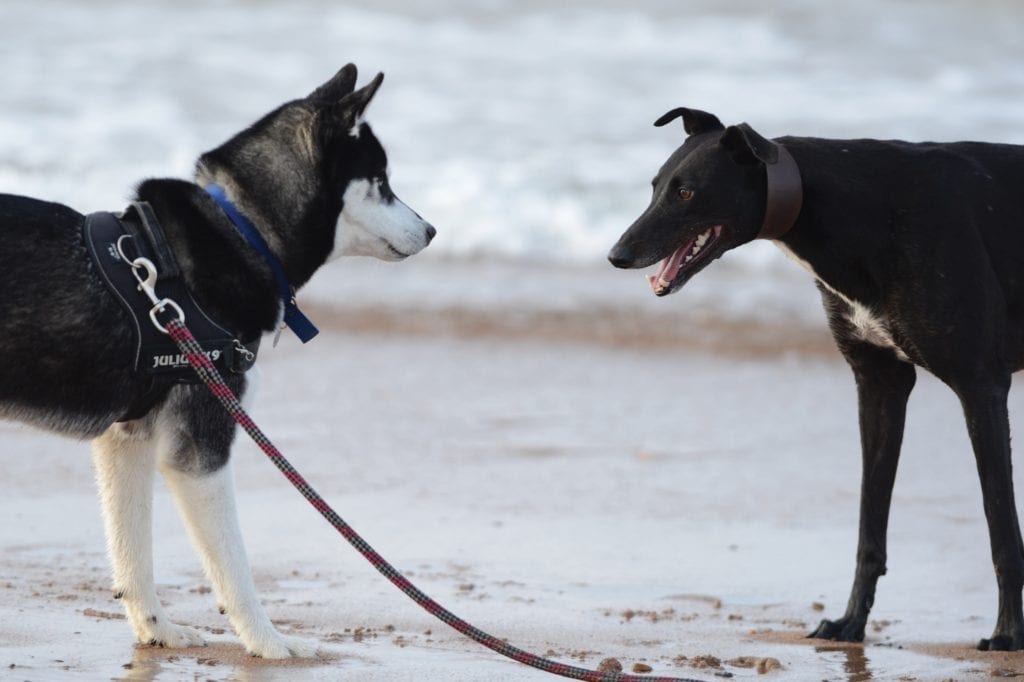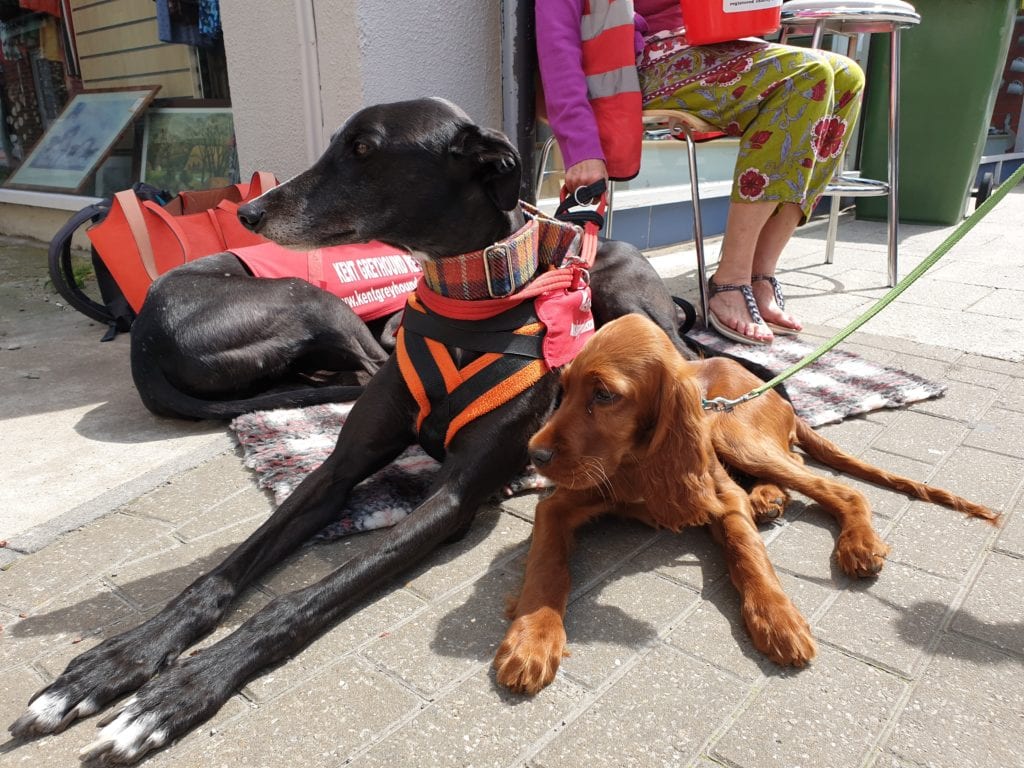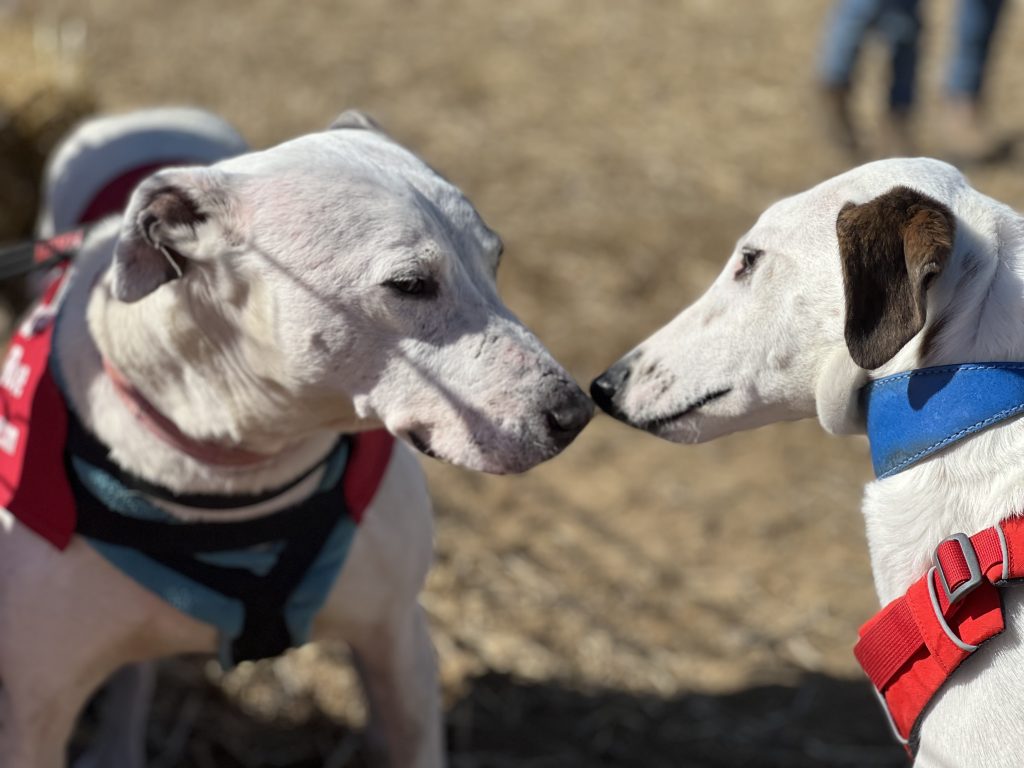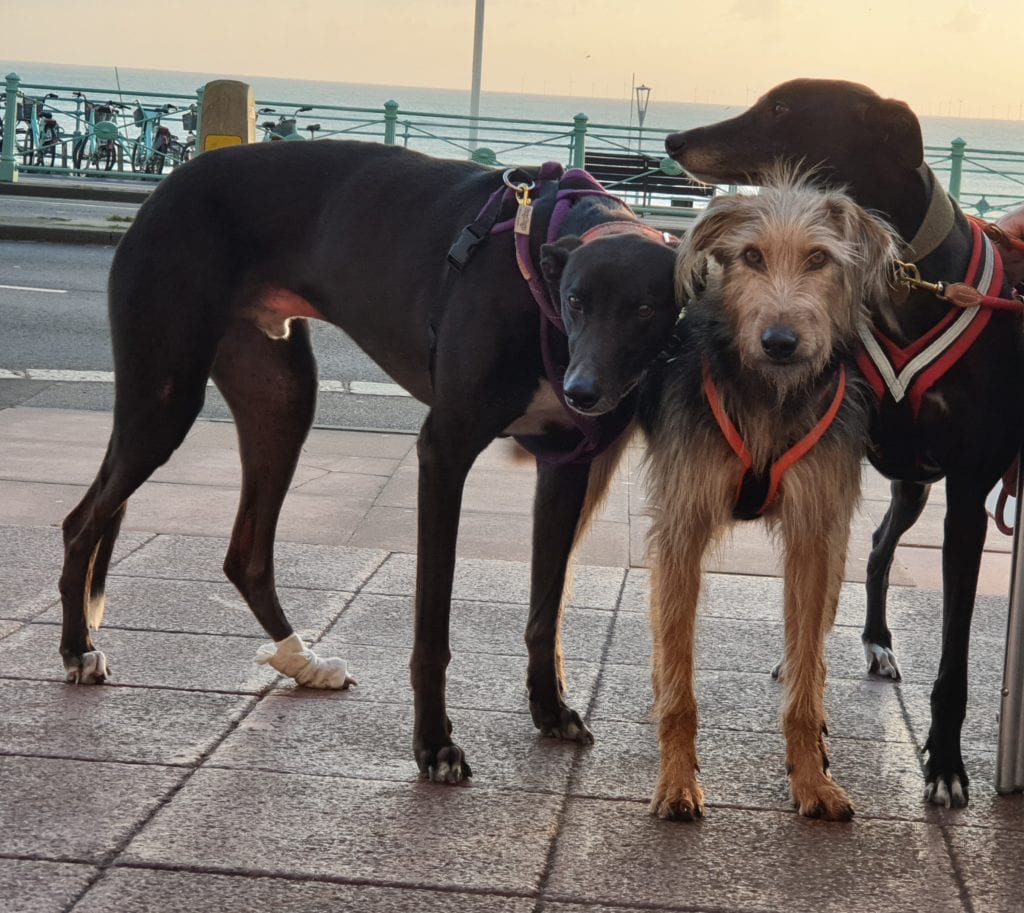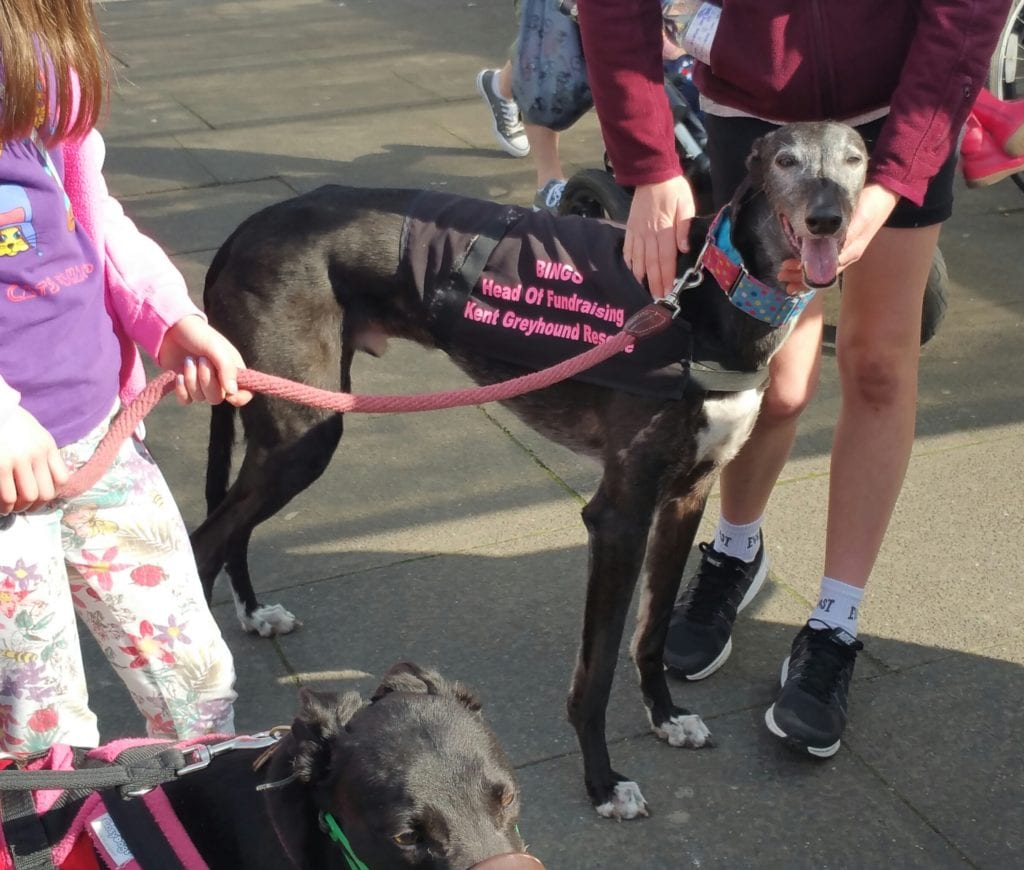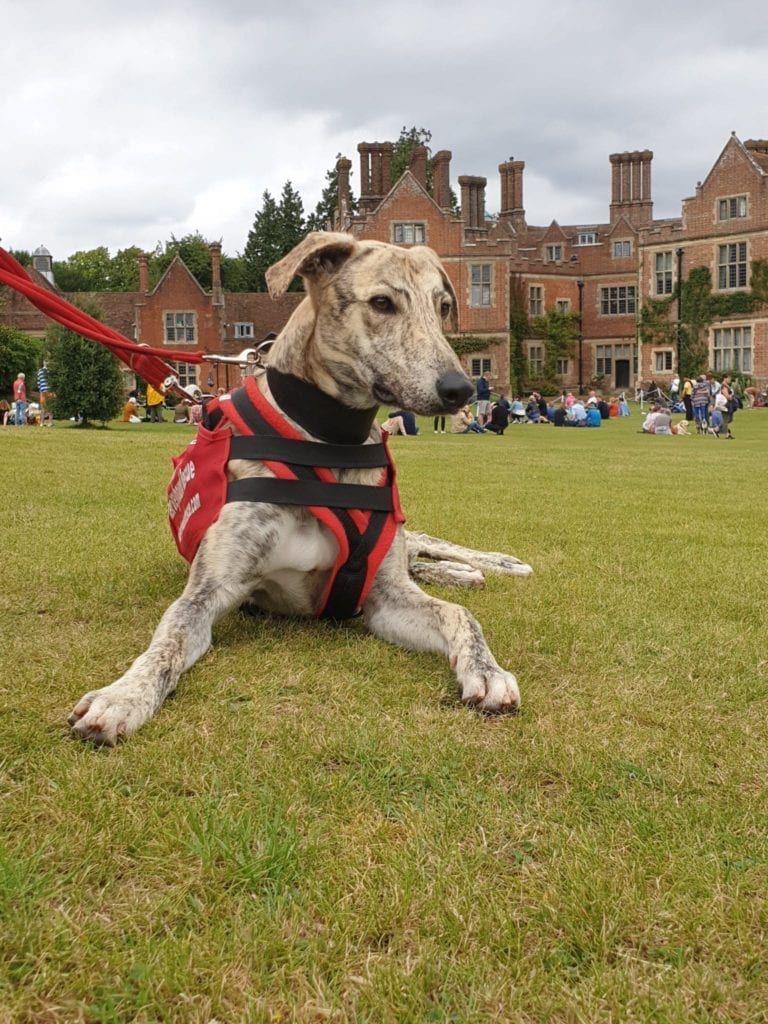Lots of new greyhounds and lurchers need socialisation. We explain why and what to do next on this page.
Socialisation For Your New Greyhound or Lurcher
Lots of new greyhounds and lurchers need socialisation. We explain why and what to do next on this page.
Think Greyhound! This explains why your greyhound may need socialisation.
If you have problems with your dog. Please remember most problems are due to lack of socialisation and not aggression. Your dog is scared.
Most greyhounds have never experienced life in a home. They have lived in kennels, and may have never seen any other breed. As far as they are concerned all dogs are greyhounds and therefore all dogs are pointy, quiet and tall.
Your new greyhound has had major changes in his life recently. They are fantastic for him, of course, but his whole world is new and he may feel anxious or unsettled. On top of the changes, his walks are disrupted by hairy things that he has never seen before. He is faced with something that sounds like a dog and smells like a dog. But is fluffy, or bouncy, or tiny, or barky ……….and maybe all at once. Some of them come running up sniffing and play bowing, some just bark in the distance to say hello.
Some greyhounds find these initial meetings confusing. They may be scared and may respond by panicking. Or by being a total wuss, or they may be excited. They may spin on the lead, do lots of barking, scream, lunge or try to run away. That behaviour is a greyhound who hasn’t got a clue how to behave YET.
Don’t worry – things will get better
Most greyhounds will adjust and settle very quickly, learning to happily meet dogs of all shapes and sizes. Some develop an aloof superiority complex and consciously ignore everything that is not a greyhound. Either way, you will just need to keep him muzzled until you are happy with all his reactions to other dogs. Even the calmest dog (or most aloof diva) might still react to an unexpected out of control mini-dog bursting out of a bush and between his legs. It might scare him half to death, or his chase instinct might kick in.
For some greyhounds the process of getting used to other shapes and sizes of dogs may take longer. Understanding their reactions is the first step towards helping your dog. If you ‘think greyhound’, then you will see through their eyes. It is not hard to understand why your new greyhound gets frightened or excited when he meets breeds he does not recognise. Even playing can be frightening to a greyhound that has never had the opportunity to play with other dogs.
Did you know greyhounds are mostly big wuzzy type dogs!
This breed (particularly the boys) is not known for being brave and with this in mind, we need to be careful not to wrongly decide they are showing aggressive behaviour. This is because wrongly treating for aggression will simply make them more anxious and reactive. More often, jumping, barking, spinning or trying to run away is simply a greyhound feeling fearful or excited. Dogs that are excessively fearful or excited when meeting new dogs need to learn to how meet other dogs (in all their wonderful shapes and sizes) in a positive way.
This is an important element of socialisation and you can improve your dogs confidence and behaviour with other breeds using the top tips below.
Talk lurcher!
This explains why your lurcher may need socialisation.
Your lurchers experience with other dogs is harder to guess. He may have been used for hunting and lived a relatively isolated life in a kennel, or on a chain. Most are well socialised though, and often he will have lived with other breeds (such as terriers), or he may have had to stand up for himself in a community of many dogs. Once again, our experience is that reactivity with other dogs is normally a fearful behaviour or excitement, rather than aggression.
If you ‘talk lurcher’ you will begin to understand your dog; his fears and his needs. Whilst we do not recommend group therapy, do chat to other lurcher owners and do your research on the breed. ‘Greydogtales’ is a great on-line read and lurchers-for-beginners-training-your-human-pt-2 gives some brilliant tips on why your dog might be barking at other dogs.
Lurchers are typically energetic and so many behavioural problems can be avoided by exercise. That means the legs and the brain. Long walks are essential, but even at home you can work his brain with toys, puzzles, hidden treats, scent games and trick training. A training class, with an experienced trainer, will be helpful for recall training so that you can work towards letting your dog off the lead in safe places.
Some dogs get anxious being on the lead when others are loose. If all this is in place and your lurcher is still reactive when he meets other dogs, then he needs help with socialisation too. The top tips below can help improve your dogs confidence and behaviour with other dogs.
Walking Top Tips
Dog walking is where it is important to make sure you understand and apply the rules for greyhound and lurcher socialisation.
Our top tip is never be nervous – no jumping behind cars and in doorways. You will make your dog more nervous. If you follow all the other advice, and you are facing a situation try singing and messing about being silly! This will stop you sending nervous signals to your dog.
If your dog is nervous or reacts to other dogs, use a correctly fitting harness and double lead (one end attached to the collar and the other to the harness) so you dog cannot wriggle out of a collar. Reduce the length of the lead so you have more control and keep calm. If in doubt also keep your dog muzzled. We sell all of these items in our shop.
Always stay calm and in control on a walk – if you get stressed, your dog will get stressed.
Reacting to other dogs has nothing to do with being trained to chase – they usually react to any other type of dog.
Most dogs are even more scared when on a lead!
Some dogs only react badly to other dogs when on a lead. The fact that they are restrained by the lead panics them because they cannot escape. Try leaving a lead on your dog for a few hours a day, just around the house and garden while you are around. Make sure it is tucked into his collar so it cannot catch on anything.
Calculate your dogs safe space. This is the area where you can enjoy a walk without your dog getting stressed, but where he can see other dogs. If you get too close to another dog and your dog gets stressed – increase the distance to your safe space. Over time gradually reduce the distance so you get closer and closer to walking nearer other dogs. Watch how your dog reacts when walking. If he licks his lips he is on the lower end of the ‘stress scale’, if he is stiff and alert and refuses to sniff anything or go to the toilet, then he is getting more stressed. Tell him he is wonderful if he can relax enough to do a complete head to tail ‘wet dog’ shake.
Give your dog lots of gentle praise and reassurance. Think of him as a child who is afraid of the dark – you wouldn’t tell a child off for getting scared and upset, you would gently reassure them. You need to do the same with your dog.
Training Classes Top Tips
Attending training classes can be a great way to help with socialisation. This lets your dog spend time in the presence of other dogs while being distracted by treats and activities. If you find a good class, the trainer should be understanding and helpful.
Lots of towns and cities now have companies who run doggie day care who might help to provide a safe environment for your dog to meet other breeds. They should be run by staff who know how to integrate and separate the dogs depending on their needs – with the emphasis being on a fun few hours. They may even do a naughty dog walk (aka socialisation walk), where a number of dogs walk together with a behaviourist or run doggie socialisation classes.
If you employ the services of a behaviourist or a trainer, then it is important that they understand how to ‘think greyhound’ or ‘talk lurcher’. Be very careful following any advice which contains top dog theories. Sighthounds do not want to be pack leader. Being “top dog” takes energy and they would rather be guided and be kept safe by the human.
It is really important that your trainer understands greyhound and lurcher socialisation issues.
Have you looked at one online shop
Everyone at Kent Greyhound Rescue is a volunteer. We receive no funding from the racing industry and have to fund everything in house. Shopping with us is a great way for you to help us help more dogs. We sell toys, coats, beds, harness, collars, leads and lots more in our online shop
Have you looked at our other Health and Welfare information?

